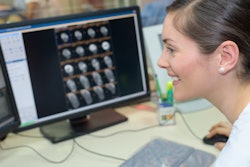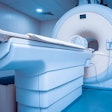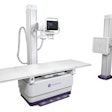
General practitioners (GPs) in Australia are placing more orders for medical imaging exams, with total orders for imaging growing 45% from 2005 to 2012, according to a survey released this week by researchers from the University of Sydney. The numbers also indicate a shift away from general radiography and toward more advanced modalities such as ultrasound, CT, and MRI.
The figures were released on July 22 as part of the Bettering the Evaluation and Care of Health (BEACH) program, a national study of clinical activity by general practitioners in Australia. The report compares imaging use over two time periods: from 2002 to 2005 and from 2009 to 2012. The BEACH data represent physician orders for imaging exams, as opposed to exams that were eventually performed and billed to the federal Medicare system.
In general, the report found that while Australian general practitioners mostly comply with appropriateness guidelines, there is some room for improvement in several areas. The lead author on the study was Helena Britt from the University of Sydney.
Nationwide survey
The BEACH data are derived from surveys of 9,802 general practitioners who participate in the program, and the results provide detail on some 980,200 patient encounters.
The researchers found that the rate of imaging exams being ordered increased from 8.7 tests per encounter in 2002-2005 to 10.2 tests per encounter in 2009-2012. Extrapolating these figures to the entire country suggests an average of 8.45 million imaging exams ordered annually by general practitioners in the first period and 12.23 million annually in the second period, an increase of 44.7%, or 3.78 million procedures per year, which was statistically significant.
The likelihood of an imaging study being ordered grew from 5.3% to 5.8%, also a statistically significant amount. Meanwhile, the average number of imaging exams ordered per 100 clinical problems that received tests remained stable, at 111.0 per 100 problems in the first period to 112.1 in the second period.
The researchers examined the use of specific imaging modalities over the two periods and found that orders for general radiography decreased while ordering rates for ultrasound, CT, and MRI grew. Radiography orders fell 9% between the two periods, from 32.7 orders per 1,000 clinical problems in the first period to 29.8 per 1,000 problems in the second period.
Showing growth were ultrasound orders, which rose 37.4%, from 17.1 orders per 1,000 problems in the first period to 23.5 orders in the second period, and CT, which increased 25.4%, from 5.9 orders per 1,000 problems in the first period to 7.4 orders in the second.
Dwarfing all other modalities was the growth in MRI orders, which climbed 333%, rising from 0.3 orders per 1,000 problems in the first period to 1.0 orders in the second period. However, the researchers noted that the overall number of MRI orders was small compared to other modalities, with about 200,000 tests ordered by general practitioners annually.
The researchers also noted that during both study periods, Australia's Medicare system had rules in place mandating that MRI scans could only be paid for if they were ordered by specialists, not by general practitioners. This changed in November 2012, after the conclusion of the second study period.
The strongest predictors that an imaging test would be ordered are shown below, as calculated by odds ratio.
| Predictors that led to imaging orders by clinical problem | |
| Predictor | Odds ratio |
| Musculoskeletal | 3.72 |
| Female genital | 1.97 |
| Pregnancy and family planning | 1.60 |
| Male genital | 1.36 |
| Neurological | 1.33 |
| Urinary | 1.32 |
| Digestive | 1.18 |
There were eight specific clinical problems that led to imaging orders: back problems, osteoarthritis, shoulder problems, sprains/strains, bursitis/tendonitis/synovitis, abdominal pain, knee problems, and other musculoskeletal injuries.
The researchers matched clinical conditions to modalities and concluded the following:
- General radiography was most often used for osteoarthritis, back problems, fracture, and sprain/strain, four conditions that accounted for 28% of radiography orders.
- Ultrasound was requested for of pregnancy and pregnancy-related checkups, abdominal pain, and shoulder problems, making up 24% of ultrasound requests.
- CT was ordered for back problems, headache, sinusitis, abdominal pain, and neck syndrome, five conditions that made up 36% of orders.
- MRI was most commonly used for back problems, knee problems, osteoarthritis, sprain/strains, and other musculoskeletal injuries, which accounted for 52% of MRI exams.
Ordering and appropriateness
The BEACH report also touched on the conformance of GP orders to available diagnostic imaging guidelines. The group found the Diagnostic Imaging Pathways (DIP) guidelines, produced under the sponsorship of the government of Western Australia's Department of Health, to be the most appropriate and useful. That said, no studies have been to determine how the DIP guidelines affect the ordering behavior of general practitioners, the researchers wrote.
In any event, promulgating imaging guidelines to physicians has not been shown in the literature to influence exam ordering behavior, the BEACH researchers stated; by the same token, electronic decision support tied to electronic ordering of imaging has also had a limited effect.
On the other hand, financial barriers such as limiting reimbursement for certain tests have a demonstrated effect on ordering, according to the researchers. The downside is that such tools can also lead to a reduction in orders for appropriate tests, they concluded.
"In general this report shows that Australian GPs select appropriate diagnostic imaging modalities for specific clinical problems," the researchers concluded. "The perceived unnecessary ordering occurs in situations such as back and joint imaging where the literature indicates that careful clinical assessment, derived from clinical history and physical examination, can improve the specificity of imaging examinations without reducing the sensitivity in the detection of abnormalities."



















